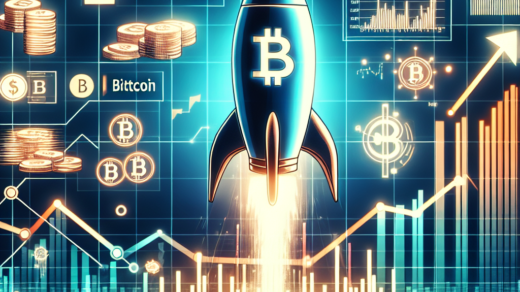How AI Data Centers Are Shaping the Future of Bitcoin Mining Economics
The rise of artificial intelligence (AI) data centers is transforming the landscape of bitcoin mining economics — and the implications extend even to operations that do not directly engage with AI technologies. This article delves into the competition between AI data centers and bitcoin miners, the concept of hashprice, and how these elements are reshaping the future of cryptocurrency mining.
The Competitive Landscape: AI vs. Bitcoin Mining
As AI data centers proliferate, their demand for inexpensive electricity is creating an intriguing dynamic for bitcoin miners. According to Spencer Marr, president of bitcoin mining firm Sangha Renewables, every mining investment is now evaluated through the lens of electricity pricing: “Is it more advantageous to utilize this site for AI purposes or for mining?” This crucial decision can influence the hashprice, a vital metric that miners rely on to gauge their potential revenue.
Understanding Hashrate and Hashprice
Before diving deeper into the implications of AI data centers on bitcoin mining, it’s essential to grasp the terms hashrate and hashprice. Hashrate refers to the total combined computational power supporting a Proof-of-Work blockchain, specifically Bitcoin in this context. In contrast, hashprice represents the expected earnings for miners based on the number of hashes their machines perform over a designated timeframe.
As of the latest data from Hashrate Index, bitcoin’s hashrate sits at an impressive 770 exahash per second (EH/s), with the current hashprice at approximately $61.12 per petahash per day. However, this figure has steadily declined as competition within the mining sector has intensified. For instance, in 2017, hashprice often exceeded $1,000 per petahash per day, illustrating how the landscape has evolved.
The Importance of Establishing a Hashprice Floor
Establishing a floor on hashprice is crucial for miners as it guarantees that the value of computing power won’t drop below a certain threshold, regardless of external conditions. Marr highlights that “in the competition for access to cheap electricity, miners are starting to be squeezed out by other buyers that are more willing to pay”. This shift underscores the competitive nature of mining and the game theory that governs decision-making in the sector.
Potential Migration of Bitcoin Miners
As AI data centers continue to expand, bitcoin miners may consider relocating to jurisdictions that are less saturated with these facilities. Jaran Mellerud, co-founder of Hashlabs Mining, asserts that “the competition for power from AI facilities will not significantly affect hashprice.” He believes that the bitcoin mining network operates as a self-regulating mechanism: a decrease in hashrate in one country will enhance the profitability of miners in other regions, allowing them to thrive.
Mellerud further predicts that by 2030, the United States could account for less than 20% of the global hashrate due to the rising competition from AI data centers, while regions like Africa and Southeast Asia are expected to see significant growth in mining activity.
Challenges of AI Data Centers vs. Bitcoin Mining
While AI data centers present a formidable challenge for bitcoin miners, it’s essential to recognize that they also come with their own set of complications. Marr points out that AI facilities are typically more complex to manage than bitcoin mines. For instance, they require constant uptime and are considerably more expensive to construct and operate. This complexity may mitigate some of the competitive pressure that miners face.
Marr concludes, “Perhaps in the end, the competition for electrons slows down but doesn’t halt hashrate growth.” This statement suggests that while AI data centers may influence the dynamics of bitcoin mining, they are unlikely to completely overshadow the industry’s potential for expansion.
The Future of Bitcoin Mining in the Age of AI
The intersection of AI data centers and bitcoin mining is an evolving narrative that warrants close attention. As the demand for computational power increases across various sectors, miners must remain adaptable and innovative to thrive. Whether through geographical diversification or advancements in technology, the future of bitcoin mining will undoubtedly be shaped by these emerging trends.
For those interested in entering the cryptocurrency space, understanding the implications of these changes is vital. Whether you want to learn how to buy Bitcoin or explore market predictions, staying informed will help you navigate this dynamic landscape.
Conclusion: Embracing Change in Cryptocurrency Mining
In conclusion, the rise of AI data centers is reshaping the economics of bitcoin mining in ways that are both complex and fascinating. As competition for electricity intensifies and hashprice dynamics evolve, miners will need to adapt strategically to ensure their long-term viability. Understanding the interplay between these technological advancements and market conditions is crucial for anyone looking to invest in or operate within the cryptocurrency ecosystem.
Stay updated on the latest developments in cryptocurrency by following our articles and insights. With a deeper understanding of how these factors influence mining economics, you can make informed decisions in your investment journey.











